
Characterization of Marine Biological Materials
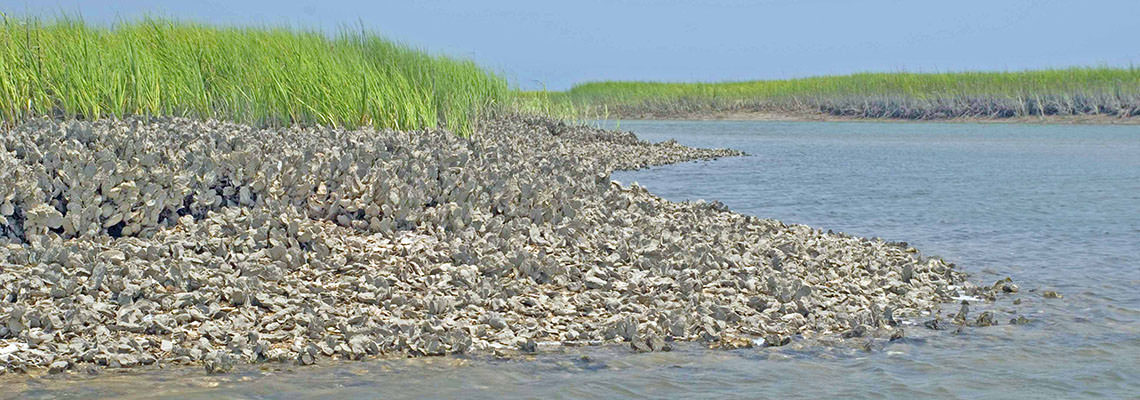
Discovering the Chemistry of How Nature Makes Materials
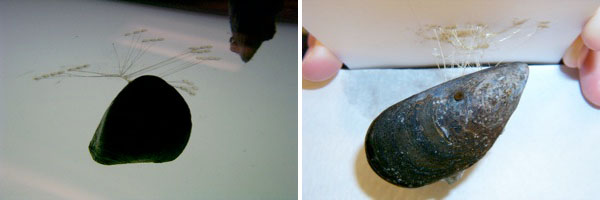 |
| A mussel adhering to a sheet of glass (left) and Teflon (right). |
Mussels adhere to any surface - including Teflon (polytetrafluoroethylene, PTFE)- by depositing a collection of proteins and then cross-linking these proteins to cure the glue. The proteins contain the unusual amino acid 3, 4-dihdroxyphenylalanine (DOPA). Results from our lab indicate that iron, collected from the surrounding water, is the reagent used by mussels for cross-linking.
Data from multiple sample classes and methods leads us to propose a mechanism of mussel adhesion in which iron(III) binds DOPA-proteins to form Fe(DOPA)3 complexes. After iron reduction and protein oxidation, a radical species is generated for reaction with oxygen. Subsequent radical reactivity may bring about protein-protein coupling as well as protein-surface coupling. The result is a cross-linked material with strong bonds to surfaces.
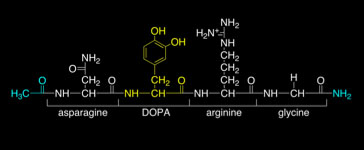 |
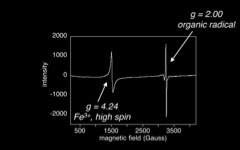 |
| A synthetic peptide model of an adhesive protein. | An electron paramagnetic resonance (EPR) spectrum of fresh mussel adhesive. |
Ongoing studies include characterizing the composition, bonding, and performance of these biomaterials produced by mussels, barnacles, oysters, and other species. Here the chemistry, biochemistry, and biology of adhesion are all being examined. In order to obtain chemical insights on specific bonding motifs in the materials, we are using synthetic peptide models to obtain atom-by-atom level detail of the cross-links present in mussel adhesive. At a biochemical level we are extracting adhesive proteins, characterizing the proteins, and exploring how such macromolecules can bring about bulk adhesion. Several spectroscopic and microscopic methods are being used to provide direct observation of reactivity and bonding contained within these marine biological materials. Additional biological work with live animals includes changing the water chemistry to explore the influences upon adhesion. With all of these studies we keep in mind mechanical performance of the materials. For example, we are uncovering links between protein cross-linking and adhesion strengths of the animals.
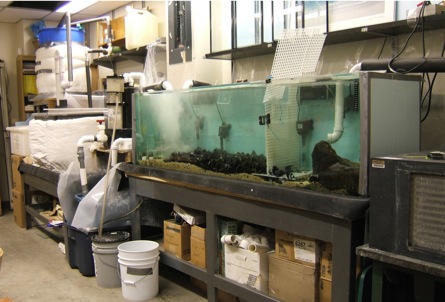
One of our aquarium systems for growing marine organisms.
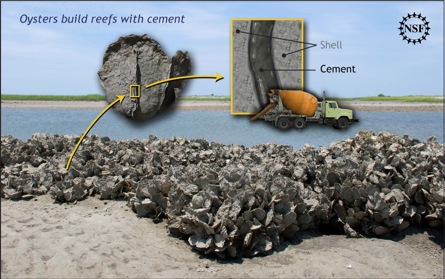
The National Science Foundation wrote a press release on our oyster adhesive work (August 2010). Click here or in the picture for more information.